Welcome,
This is just a little about what Jed does with his & the horses intrusted in his care & training methods.
This is one of the 1st questions Jed is asked from new clients, (what training methods do you use?). He has a natural way with them, since he was pretty much horse back before he was born, he can read them & knows what he can or can't do tell there ready or excepting of the situation. A lot of people ask who's method do you use Parelli or Clinton? The truth is a lot of what they are doing & teaching, Jed was doing when he broke his 1st horse at 10 & 1st customers horse at 13. He has had a passion for starting colts since he can remember & that passion has not ran out, because he still watches & reads any & all material. He basically thinks any real horseman never quits learning, no matter how successful you become in the equine industry, you can not quit learning. Here's what he usually puts them through in 30 days & some of his thoughts, in his words.
When I get a horse in I usually try & listen to the owner & get a fill for what there wanting or expecting from their horse when they get them back & to see how knowledgeable of a horse owner they are too. The reason for this is for the horses benefit as well as the owner. It does no good to teach this horse all these cues & the owner doesn't know basic horsemanship. So I always try & take the time to work with both if possible if they need it. Once I get the horse I check his teeth. I like to make sure there's no wolf teeth or sharp points in there mouths. This just eliminates the mouth being a issue later when we go to a bridle, actually even a halter or side pull can irritate their face if they have sharp teeth, so its just a good idea on any of them.
I then start them in a round pen if they have not been handled, I do sack them out, usually with a blanket or feed sack or whatevers avaliable, never tied solid. I dont want them to just put up with being sacked out because their tied, I want them to realize they can move if need to but want to stay cause their use to it & trust me. Then I introduce the saddle pad & saddle. I will then ask them to lunges or move forward, if they go to buck I try and discourge this as much as possible, I dont want them to even know what that is. while doing all this i have been working off the release of pressure, so before I go to get on I make sure they can give me their face to the left & right. If they can do that & are calm I'll go ahead & step up on them & back off again. The next step is asking them to move forward, I don't worry to much where their going as long as there calm. Then I ease into asking them to following their face. All of this as far as time frame just depends on the horse. Some are accepting of a rider the 1st time out & sometimes maybe a week, but usually the 1st few days. We don't stay in the round pen long at all, usually 2nd or 3rd ride we're in the big arena or out to the pasture. I start everything in a halter & lead rope, maybe a sidepull, then move into a snaffle once their comfortable with it. Thats basically how I do it. So in 30 days you can expect then to be expose to traffic, cattle & a number of other things, Along with being soft in the face, breaking at the poll, of course walking, trotting, & galloping in the correct leads, moving off leg pressure & backing. We train a lot of barrel horse's so we work towards their body's being supple, counter arching, 2 tracking, side passing & of course a lot of collection & roundness. Well I hope I've anwsered any questions you may have, if not just leave a comment right here on this page or send us a email or call, be glad to help.
Jed Ward
goodhorses101@aol.com
316-806-3344
This is just a little about what Jed does with his & the horses intrusted in his care & training methods.
This is one of the 1st questions Jed is asked from new clients, (what training methods do you use?). He has a natural way with them, since he was pretty much horse back before he was born, he can read them & knows what he can or can't do tell there ready or excepting of the situation. A lot of people ask who's method do you use Parelli or Clinton? The truth is a lot of what they are doing & teaching, Jed was doing when he broke his 1st horse at 10 & 1st customers horse at 13. He has had a passion for starting colts since he can remember & that passion has not ran out, because he still watches & reads any & all material. He basically thinks any real horseman never quits learning, no matter how successful you become in the equine industry, you can not quit learning. Here's what he usually puts them through in 30 days & some of his thoughts, in his words.
When I get a horse in I usually try & listen to the owner & get a fill for what there wanting or expecting from their horse when they get them back & to see how knowledgeable of a horse owner they are too. The reason for this is for the horses benefit as well as the owner. It does no good to teach this horse all these cues & the owner doesn't know basic horsemanship. So I always try & take the time to work with both if possible if they need it. Once I get the horse I check his teeth. I like to make sure there's no wolf teeth or sharp points in there mouths. This just eliminates the mouth being a issue later when we go to a bridle, actually even a halter or side pull can irritate their face if they have sharp teeth, so its just a good idea on any of them.
I then start them in a round pen if they have not been handled, I do sack them out, usually with a blanket or feed sack or whatevers avaliable, never tied solid. I dont want them to just put up with being sacked out because their tied, I want them to realize they can move if need to but want to stay cause their use to it & trust me. Then I introduce the saddle pad & saddle. I will then ask them to lunges or move forward, if they go to buck I try and discourge this as much as possible, I dont want them to even know what that is. while doing all this i have been working off the release of pressure, so before I go to get on I make sure they can give me their face to the left & right. If they can do that & are calm I'll go ahead & step up on them & back off again. The next step is asking them to move forward, I don't worry to much where their going as long as there calm. Then I ease into asking them to following their face. All of this as far as time frame just depends on the horse. Some are accepting of a rider the 1st time out & sometimes maybe a week, but usually the 1st few days. We don't stay in the round pen long at all, usually 2nd or 3rd ride we're in the big arena or out to the pasture. I start everything in a halter & lead rope, maybe a sidepull, then move into a snaffle once their comfortable with it. Thats basically how I do it. So in 30 days you can expect then to be expose to traffic, cattle & a number of other things, Along with being soft in the face, breaking at the poll, of course walking, trotting, & galloping in the correct leads, moving off leg pressure & backing. We train a lot of barrel horse's so we work towards their body's being supple, counter arching, 2 tracking, side passing & of course a lot of collection & roundness. Well I hope I've anwsered any questions you may have, if not just leave a comment right here on this page or send us a email or call, be glad to help.
Jed Ward
goodhorses101@aol.com
316-806-3344
Caring for your equine partner in freezing temps?
Wed, 2nd January, 2013
Adequate feed, water and shelter preserve horses' health and reduce long-term expenses. Horses are hardy animals that can usually adapt well to cold weather. Nevertheless, caring for horses when it's freezing does take special care and attention. Even if you are not riding your horse as frequently as usual, make sure you maintain daily habits of care and feeding during winter weather.
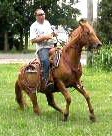
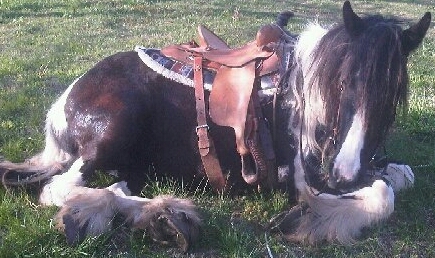
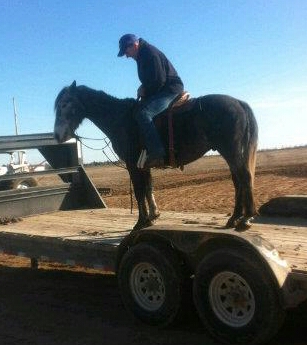
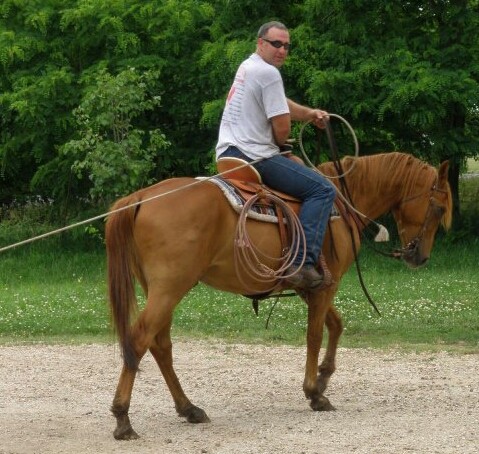
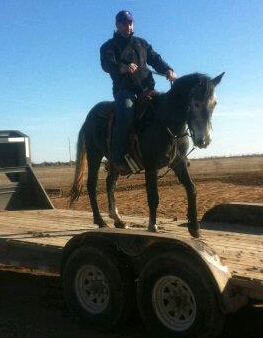
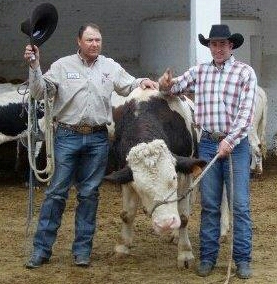
Jed Ward & Mike Beers, Spain 2009